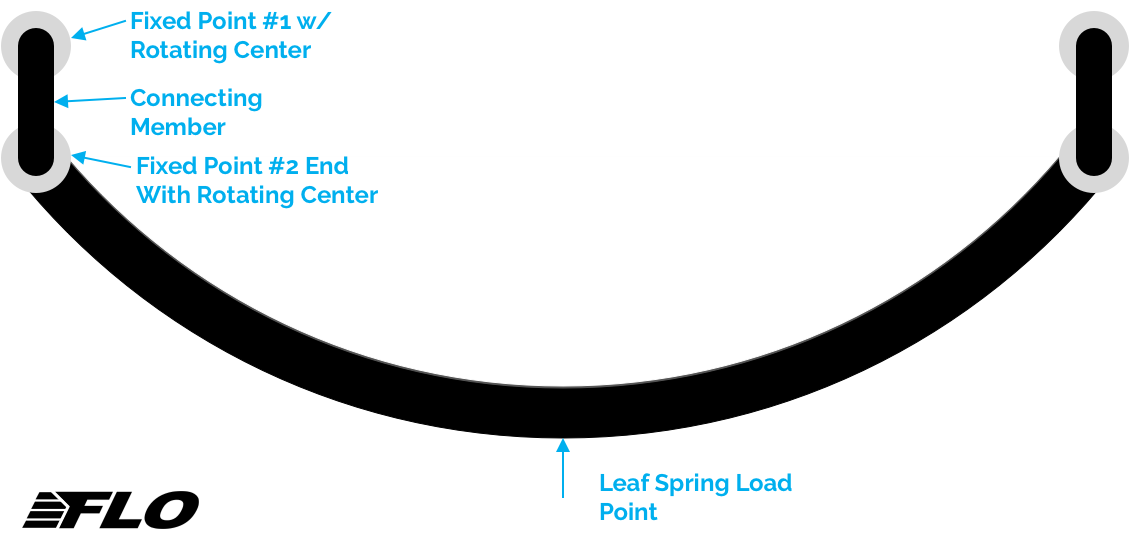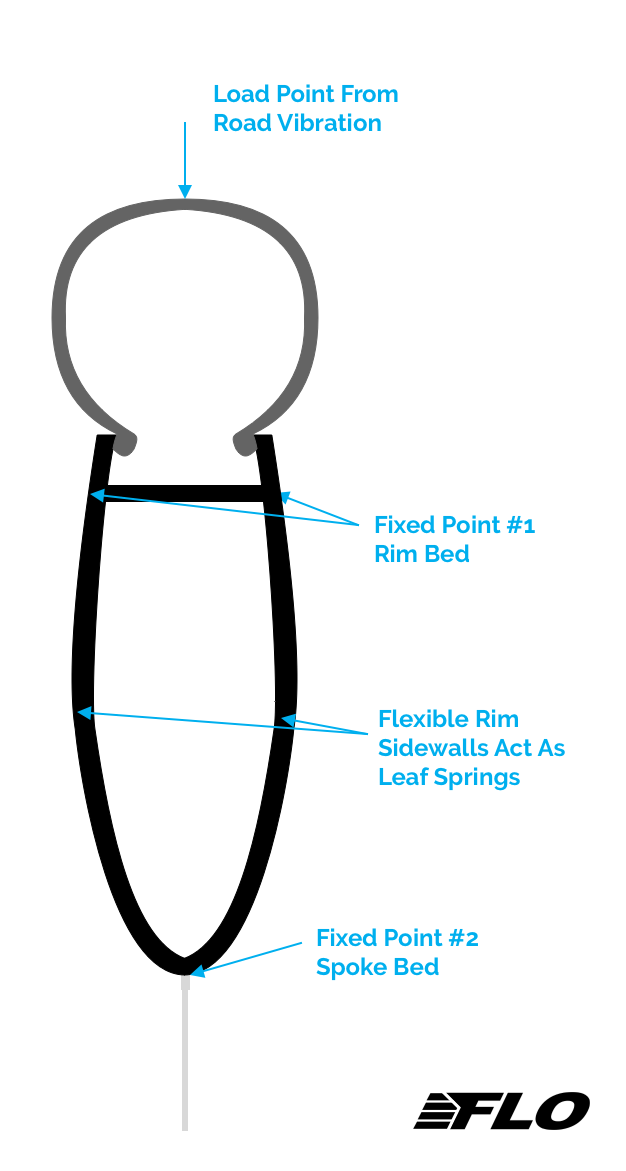In 2020, we released the world’s first deep-section carbon gravel wheels that were optimized for aerodynamics and rolling resistance. As a result of the deep carbon profile of the G700 and G650, we discovered that they was a very stable wheel. The key to this stability is vibration management through our rim profiles. All of our carbon rims are designed to manage vibration in the layup process but we did not expect the extreme benefit we saw with our gravel wheel line. This article will talk about how the rim helps dampen vibration through the profile by acting as a leaf spring.
What Is A Leaf Spring?
Over the years we’ve talked about a carbon rim acting as a leaf spring. What exactly is a leaf spring?
“A leaf spring is a simple form of spring commonly used for the suspension in wheeled vehicles.”
The picture below shows a simplified example of a leaf spring you may find on a vehicle.

The load point is connected to the wheel axle of the vehicle and Fixed Point #1 is connected to the frame. As the vehicle goes over bumps, a force moves up through the tire to the axle and the leaf spring bends upwards under load. When this happens the connecting members swing outwards allowing the leaf spring to lengthen.

The Leaf Spring Effect Of A Carbon Rim
The side walls of a carbon rim acts like a leaf spring and when designed properly, provide great vibration reduction for the cyclist. The image below shows a cross section of a rim and tire. The side walls of the rim act as two leaf springs. The two fixed points are the rim bed and the spoke bed.

Let’s walk through the forces. The hub is fixed to the frame and is connected to the rim via the spokes. This creates a fixed point at the spoke bed where the spoke connects to the rim. NOTE: Yes, spokes flex but for simplicity’s sake let’s assume they are rigid. The side walls are made of a thin carbon fiber that flexes under load. The rim bed is where the tire connects and is made of a much thicker carbon fiber lay-up. This is rigid. The tire is what sees the load through bumps in the road. The tire is flexible.
With the only flexible members being the tire and rim side walls, when a load is encountered, the tire and sidewalls will buldge outward absorbing vibration. This dampening found in a well designed carbon rim is not found in aluminum rims. The aluminum is too stiff, not providing any flex. Even our Aluminum + Carbon wheels do not have this benefit. The reason for this is that the spokes pass through the carbon fiber and connect to the rim. This makes the carbon non load bearing. For a better understanding of the rim construction of our Aluminum + Carbon wheels check out this post.
How The Leaf Spring Effect Makes You Faster
Now that you understand how the leaf spring works, let’s talk about how it makes you faster.
- On bumpy terrain, like gravel or rough pavement, the rim profile acts as a shock. This helps keep your tire on the road, which allows your wheel to track straighter. A straighter, calmer, wheel takes less energy to control and gets you there is a straight line. Each small turn of the wheel takes you slightly off course. It adds up over thousands of repetitions.
- The reduced vibration reduces the vibrations going through your body. Vibration in the body creates friction in your muscles, which creates heat and exhaustion. You conserve energy with a smoother ride and burn fewer calories.
- You get improved grip. When your tires stays on the surface your grip is improved.
- Your rolling resistance is improved. Less vibration in the system lowers your impedance. To learn more about impedance check out our Impedance Blog.
Final Thoughts
If you have not experienced the feeling of our carbon wheels on gravel or pavement we recommend trying it. You will immediately feel a smoother ride and ultimately be a faster cyclist.

Co-founder at FLO Cycling. Jon manages the day to day operations and acts as the lead engineer for all FLO products.
